Flowers
Are you thinking about planting a Moon garden but are not certain where to start ? A nighttime - flower garden is a stunning addition to an outside livelihood space . In this clause , gardening expert Melissa Strauss partake her favorite nighttime - bloom plant life that are perfect for a Moon garden .
message

A moon garden is a magical space where pale , nighttime - bloom flowers beam luminously in the moonshine , releasing their redolence into the night air . While not all flowers in a moon garden have to be Nox - blooming , those that are , tend to be at their peak during this time , build a grand foundation to construct upon .
Night - blooming flowers are often fragrant , release their scent at dusk and perfuming the air around them . These flowers are particularly wonderful to set around an out-of-door dining expanse or near a patio . They flourish where they can be delight on lackadaisical summer evenings when their smell hang captive in the sultry night tune or in the other morning hour when the garden has a meditative and serene quality .
Many night - blooming plants have fleeting salad days that open up for only one night , languish quickly with the dawn sun . The anticipation of these momentous blooms is a drill in patience and dedication , and their abbreviated and magical appearance rewards the ardent nurseryman .

We garden for many reasons . Not the least of these are providing food for our families , feed pollinator populations , or increasing the privacy of our space . While these are all worthwhile pursuits , there is something wonderful about a garden imbed just for the sake of those enchanted consequence spent savor the fruit of one ’s labor .
Let ’s think some rattling , night - flower peak that are certain to enamour and delight as they unfurl by the light of the Earth ’s silvern satellite .
Angel’s Trumpet
Botanical Name : Brugmansia spp .
Angel ’s horn is a humble Sir Herbert Beerbohm Tree originate in South America . However , it is considered nonextant in the wild . It is wide usable as an ornamental industrial plant , and if I do say so myself , it is really breathless .
These evergreens can be grown as large shrubs or trained into the cast of a tree , reaching up to 30 feet improbable in some regions . They can also be kept more stocky as a container plant .

The with child ( 6”-24 ” long ) flowers of the Angel ’s Trumpet are how this plant garner its name . They are long and pendulous , trumpet - work , hang downward like twirling skirt . Angel ’s cornet open up at nighttime and can last between a single day to several days . They let loose their aroma at night and are pollinated predominantly by moth .
Be cautious about placing this plant near animation spaces if you have untested children or pets . Every part of the Angel ’s Trumpet plant life is vicious to man and animals . As long as care is taken to foreclose ingest any part of the plant , the trick of the Angel ’s Trumpet is undeniably magnetic .
Casa Blanca Lily
Botanical Name : Lilium ‘ Casa Blanca ’
The much - loved blossom of the Casa Blanca lily are ordinarily found in the bouquets of summer brides . The large , creamy livid flowers unfurl their petals in the eve , releasing the large amount of fragrance . The flowers can remain open for up to 2 weeks under the correct conditions .
Casa Blanca is an oriental hybrid that grows 3’-4 ’ tall on strong stems that support clusters of up to 8 of their big ( 6”-8 ” ) blooms . They also make fantabulous cut flowers , so you may leave them in the garden or bring them indoors to enjoy their stiff , sweet perfume .

These lily blossom so prolifically that there is no reason not to have it both way . Their stunning snowy bloom will radiate in the light source of the sun and the moon .
Chocolate Daisy
Botanical Name : Berlandiera lyrata
Chocolate daisyis a member of the Aster family and has an extensive range where it can be develop with very trivial maintenance . Native to the Southwestern United States , this drouth - liberal plant is known to bloom for many calendar month and nearly year - round in warmer climates . Deadheading this plant life will lead to uninterrupted , increased heyday .
The pretty , yellowish flower bloom at gloaming , although they are most fragrant near dawn . For the early riser , the chocolatey scent of these bloom perfectly complements that first cup of morning coffee . With a height and width of only 1’-2 ’ , these plants make a wonderful boundary line for a patio or walkway .
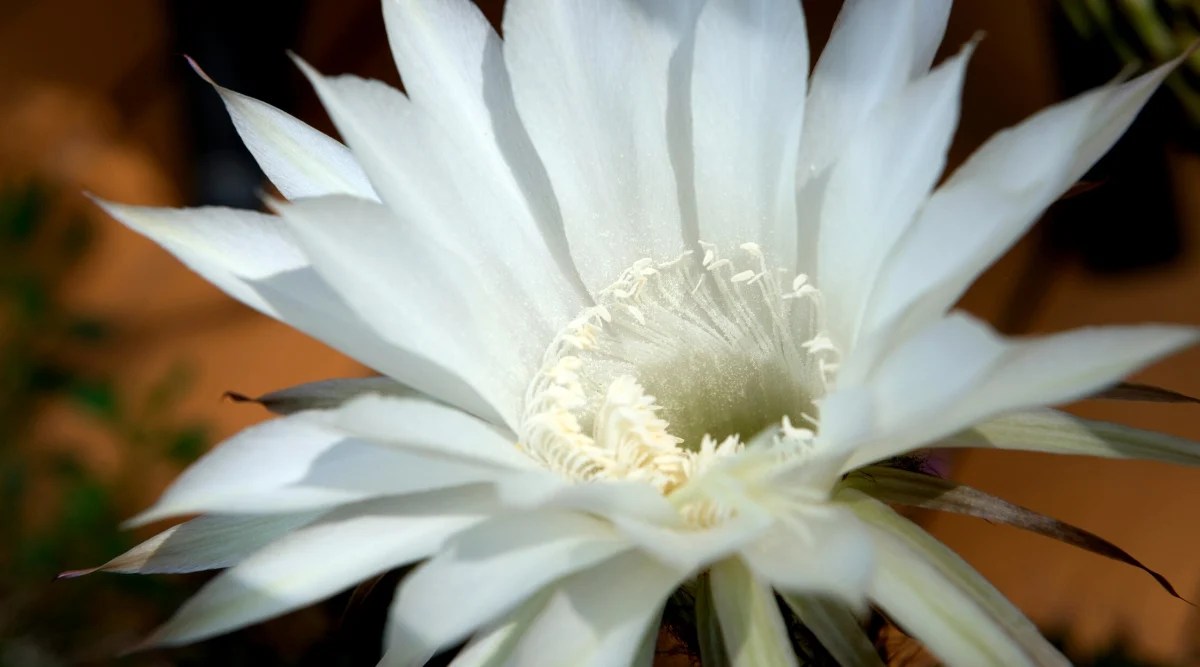
Deer-Horn Cactus
Botanical Name : Peniocereus greggii
Here we have one of the most elusive and interesting Nox - bloom plant , the deer horn or Arizona Queen of the Night cactus . This native of the Chihuahuan and Sonoran Deserts is a wondrous , although invisible , addition to a lush garden . For most of the year , Deer - Horn attend like a run - of - the - James Mill cactus , with thin branching arm covered in modest , sharp spines .
The coronate glory of the deer horn cactus is its waxy , white flowers , which flower for only one night per year remaining open just long enough for other daytime pollinators to do their work . These blink - and - you’ll - young woman - it flower are to a great extent fragrant in their many - petaled glory and are followed by slender , edible , carmine fruits which draw snort and other wildlife .

Devil’s Trumpet
Botanical Name : Datura
Much like angel ’s trumpet , this plant is poisonous , so it should be institute carefully in areas where pets and little tiddler frequent . The flowers are similarly regulate . However , rather than hanging down like Angel Falls ’s trumpet , the devil ’s cornet has upturned efflorescence , commonly white with number of lavender or pink on the throat and at the sharpness .
Datura is a nightshade pertain to tomato and eggplant . When planted in full sun , the plant will originate thick , shrubby leaf with a bluish shade . It can also survive in fond shade , but the foliation may become leggy and will not flower as heavily . The flowers exposed in the eventide and feel of honeysuckle , which pull out pollinator like the sphinx month .

Dragonfruit Cactus
Botanical Name : Selenicereus undatus
Many type of cacti have a habit of blooming at night , and the dragonfruit cactus is no exclusion . It also bring forth pleasant-tasting fruit found in many grocery store stores and farmer ’s markets throughout the Southern United States .
The efflorescence bloom in the evening and emit an uplift fragrance . They are pollinated by chiropteran and close up quick in the next sidereal day ’s oestrus . ( Although they ’re also often hand - cross-pollinate to get good fruit ontogenesis , too ! )

The flower of the dragonfruit cactus are very large and showy , as long as 14 ” and up to 9 ” astray . They are many - petaled and have a tubular show . Most flowers are snowy but can be pink or cherry-red , depending on the species . Both the flower and yield of the plant are edible , and one plant can flower many times in a season .
Easter Lily Cactus
Botanical Name : Echinopsis O
Easter Lily cactus is a achiever of the Royal Horticultural Society ’s Award of Garden Merit , and it ’s well-situated to see why . For most of the year , the industrial plant is a sweet little mound of spheres with many ribs and sharp spines . In springtime , this cluster of cacti set about to produce fleeceable stem about 12 ” in height , atop which blossom large , fragrant , white or pink lily - like flower .
The stunning heyday of the Easter Lily cactus open in the previous afternoon when the temperature drops . They last only through one night and wither the next day as the temperature rises again . A mature cactus can keep on to flower through the summer , producing as many as a XII of these stunning efflorescence .

Easter Lily cacti are resistant to pest and diseases and can be quite dusty patient of as long as they stay dry in the wintertime , but they also make nice container flora that can be lend indoors in the coldness .
Evening Primrose
Botanical Name : Oenothera biennis
This flora is perhaps more well - known for its exercise as a supplement than its real flowers . As a plant , it is a tight - growing aboriginal to North America that also happens to be a night boner .
even primula is biennial , so it wo n’t bloom in its first year , but it self - semen , so each year thereafter , you should see plenty of flush from this sweet lilliputian industrial plant .

The blooms are delicate and yellow with a sweet , lemony bouquet that draws nighttime pollinator like moths to the garden . The four - petaled flowers unresolved in the evening and confining in the morning . nip off off the spent blossom will keep this plant from self - seeding .
Evening Rain Lily
Botanical Name : Zephyranthus drummondii
This pretty member of the amaryllis crime syndicate is known as a raving mad prairie flower across most of the central United States . They produce from bulbs , so they are leisurely to moderate in terms of cattle farm , and they prefer full sun but will do fine in fond shade as well .
Their adorable white flower salad days in the eve , making them wonderful for a synodic month garden . They last for several days , during which time they are a good nectar source for bees and butterflies . These flowers ordinarily bloom after rainwater and commence white , exchange to pink as they age . They also give out a pleasing perfume .
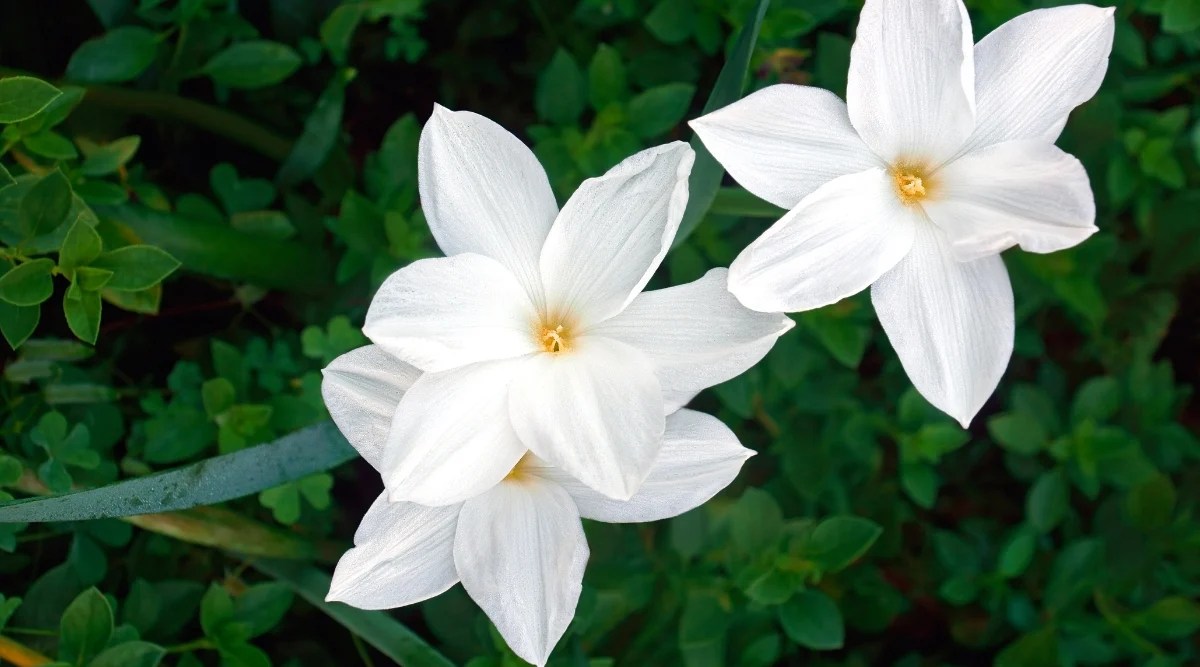
Flowering Tobacco
Botanical Name : Nicotiana alata
Flowering tobacco , also know as jasmine baccy , is a nightshade family member . Like most tobacco species , it prefers organically rich , moist soil . Unlike its cousin-german N. tabacum , this industrial plant is not grow for its leaves but rather for its value as an ornamental . It is a delicate plant , topping out around 3’-5 ’ tall with long spatula-shaped folio .
This tobacco plant is well known for its nocturnal flowers . The long , tubular blooms are yellowish green to white and only unresolved at night when they give up their soft scent , unremarkably compared to jasmine . It defecate a marvellous Moon garden plant and draws moth that cross-pollinate its ticklish flowers .

Foamflower
Botanical Name : Tiarella
Tiarella , or foamflower , is aptly named for its bountifulness of frothy , white flush spikes that grow abundantly atop red and fleeceable foliage . This works make a wonderful addition to any garden bed . It has beautiful , dramatic , bi - colored foliation that originate in a mounding fashion . It looks wonderful in a container , as a solitary flora , or in a group .
The bottle - brush - type blossoming bloom at night and remain open during the day , emitting a light fragrance that is attractive to pollinator . This winner of the Royal Horticultural Society ’s Award of Garden Merit is evergreen plant in mild climates . In cool climate , the foliage bronze as the weather condition cool down . It blooms for about 6 week in late spring to other summer .
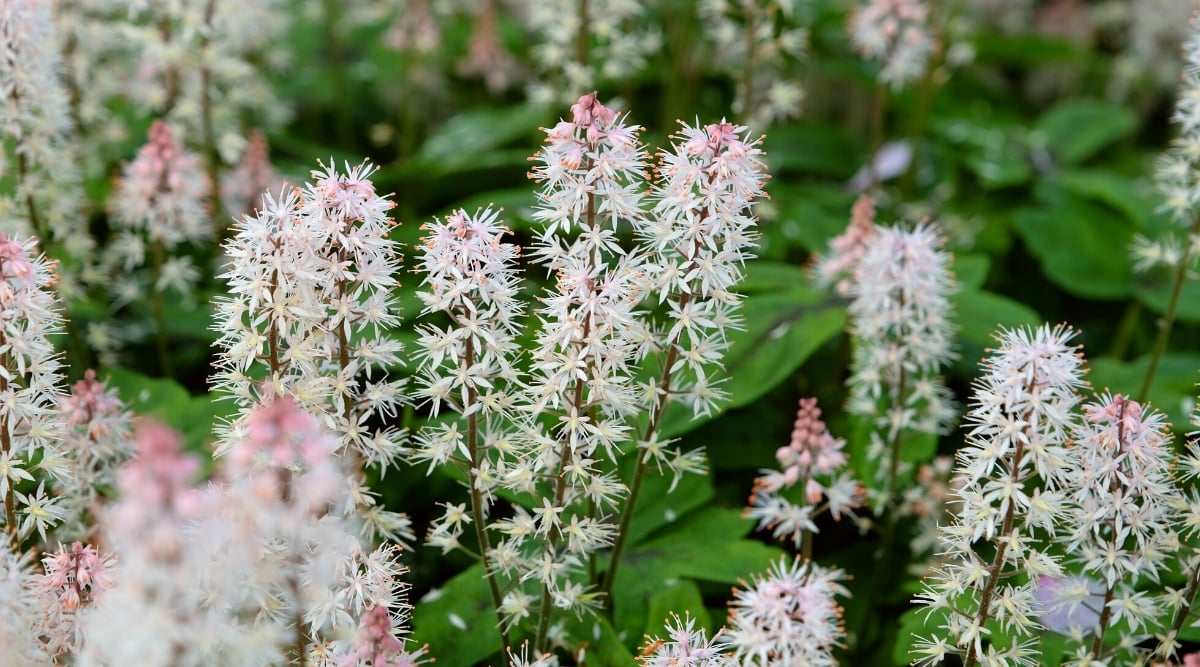
Four O’Clocks
Botanical Name : Mirabilis jalapa
Four O’Clocks have a sure nostalgic good luck charm to them due to their long - bear popularity . These little , shrubby plant make an excellent terrace or walkway border , particularly if the space is mainly used after in the 24-hour interval . These plant life flower profusely and in many different colors . The flowers open in the former afternoon in response to the temperature faulting as the sun lay out .
The bloom time of year for these flowers is spring in the Southern United States , but cooler climates will see flower start to bloom in the summer . Four O’Clocks splashy , colorful flowers are fragrant and pull early pollinators before droop in the hotness , create manner for a young undulation of bloom in the evening .

Gardenia Augusta
Botanical Name : Gardenia jasminodes
Gardenia plant are closely related to umber plants and have similar glossy , evergreen leafage . The Augusta multifariousness is a large gardenia with arresting , creamy , livid blossoms that open up in a swirling rose window of perfumed beauteousness . Gardenias are inhuman hardy to zona 8 , and I can tell you that even down to 20 ° , my gardenia were one of the green works in my yard this wintertime .
Gardenias are n’t necessarily night - bloom . Their fragrance intensifies in the evening , making them a wonderful addition to a nighttime - blooming or moon garden . Their gorgeous lily-white flowers will radiate in the moonshine , and their perfume has few rivals in the public of flower . This is a must - have . Gardenias make great container plants as well .
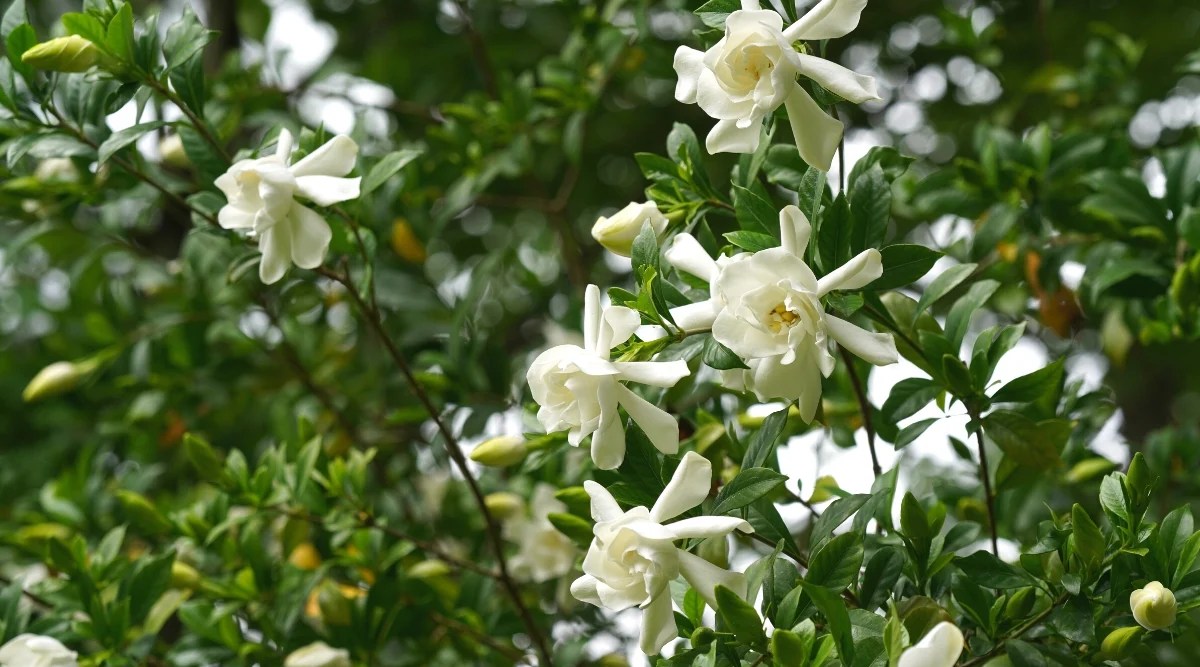
Mock Orange
Botanical Name : Philadelphus coroarius
Mock orange tree is a larger shrub with thick foliage , making it a wonderful privacy hedging . Named for its flowers similar in appearing to orange blossoms , the white efflorescence of the mock orange are typically fragrant and appealing to butterflies and other pollinator .
These shrubs flower intensely in May and June . Clusters of four - petaled , clean blossoms open in succession , at night , for several weeks . In full heyday , this bush is a sight to behold and is aglow at night by the synodic month ’s light .

Moonflower
Botanical Name : Ipomoea alba
Thename Moonfloweris often used to describe another flower on our inclination , the Datura , but we will use this name to relate to Ipomoea alba . The gravid Ipomoea genus include morning aureole and seraphic potato , among other popular plants . Moonflower is a vining plant that can gain up to 30 ’ .
Moonflower create a program line of soft elegance on a trellis or arched entryway to an outdoor living distance . The big , white bloom of youth opened at dark and have a sweet , delicate fragrance . They are very attractive to pollinating moths . Even when not in bloom , the heart - shaped leave of this vine are charming and attractive .

Night Blooming Jasmine
Botanical Name : genus Cestrum nocturnum
There is tilt surround using the name Jasmine versus Jessamine , where this and some other plants are concerned . While some say the two names are interchangeable , others importune that they are different , so we will call this Nox - blooming jasmine , but if you look for it and see it being called jessamine , it ’s belike the same plant .
No matter what vulgar name you call it by , Cestrum nocturnum is just a delight . This woody evergreen shrub produces a lavish supply of vasiform white heyday that open in the evening , releasing an intoxicatingly beautiful scent .
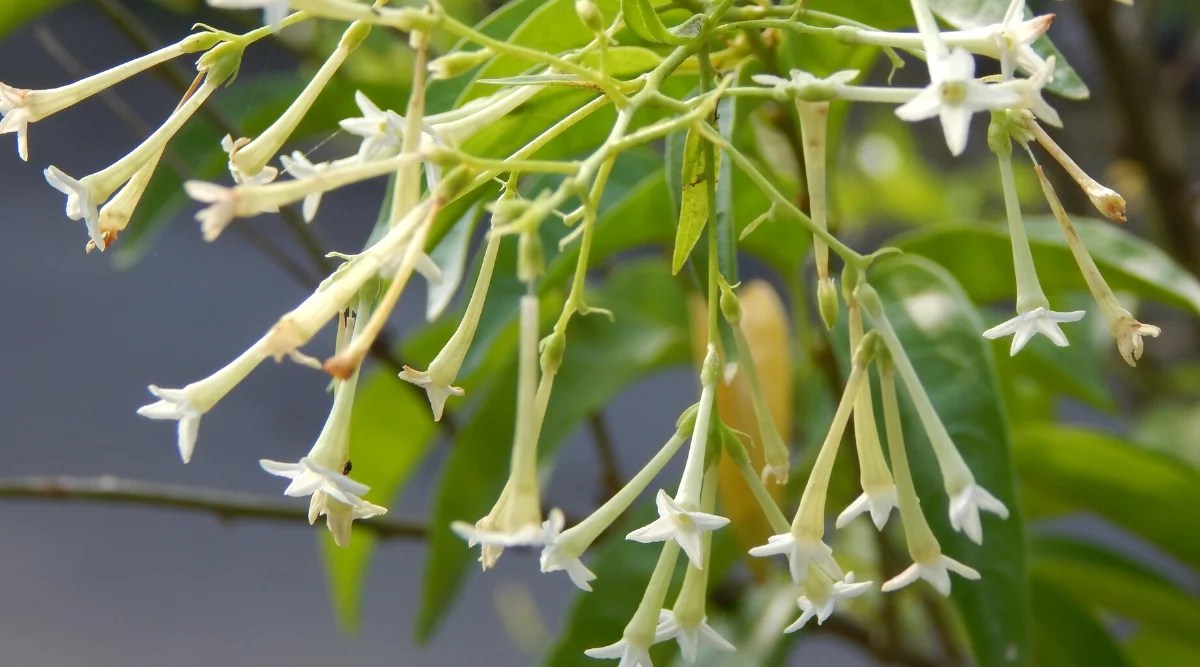
The heyday come together back up during the day but return each evening for the good part of the summer months and into the fall . The fragrance of this tropical beauty can travel as far as 500 ft from the works .
Night Phlox
Botanical Name : Zaluzianskya capensis
Night phlox makes a terrific increase to a Nox - blooming or moon garden . The flowers come in shades of lily-white , regal , and deep carmine , and they have a distinctive scent that will remind you of several dissimilar flowers blended into one . The aroma can be described as honeyed vanilla unify with a fresh almond odor and a tactile sensation of spice .
The Midnight Candy variety show is particularly beautiful both day and night . It has cryptical cherry buds that open to pure white flowers as the sun position , releasing their tremendous naughty , sweet , complex fragrance as they open up .

Night phlox are relatives of snapdragons . They wish robust , well - drain soil and persist succinct , so they are great for filling in spaces between big plants .
Night Scented Stock
Botanical Name : Matthiola longipetala
One of the only annuals on the listing , the nighttime - scented lineage will be worth planting yearly , I promise . This incredibly low - upkeep and tight - farm plant is certain to advance you over with its long bloom time and lovely lilac-colored flowers .
Nox - scented blood is delicate in show . The leaf are slightly grasslike , and the graceful flowers rosiness in great Book of Numbers throughout the summertime . Opening in the eve , the flower are very fragrant . They make wonderful cut flowers and will last for a workweek indoors . This European aboriginal wish full sun in all but the warmest climates , where it will appreciate some shelter in the good afternoon .
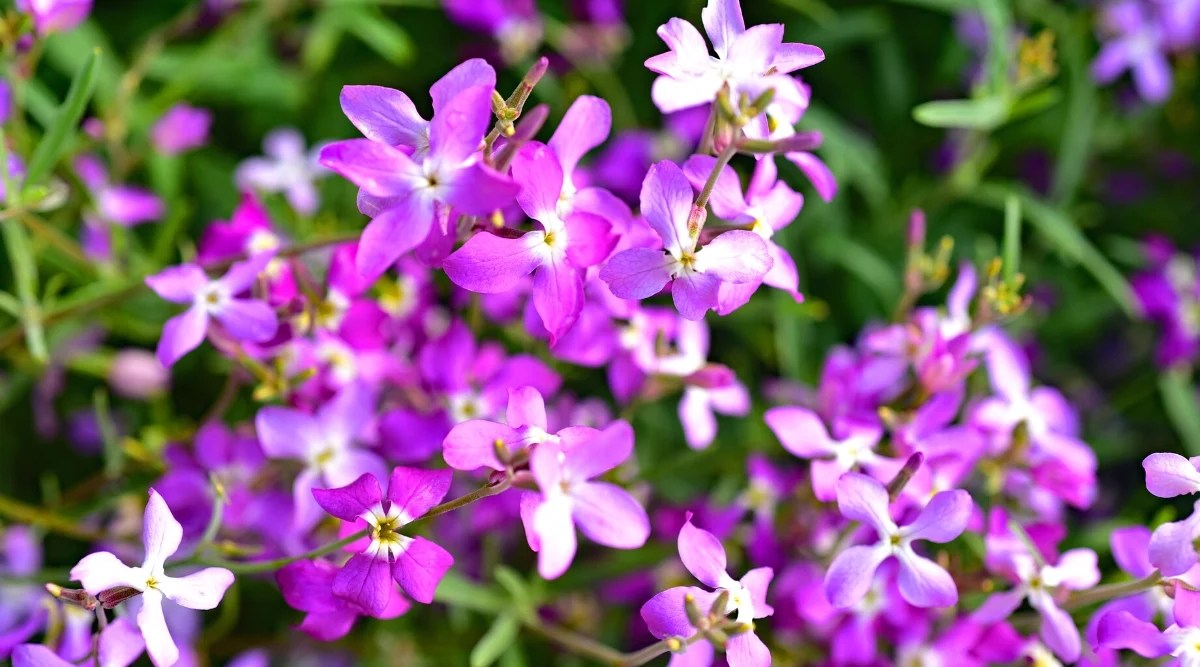
Queen of the Night
Botanical Name : Epiphyllum oxypetalum
Although technically class as a cactus , Queen of the Night behave a plenty like an orchid . As such , it requires a different sort of tending than most cacti . To put it , this one is a bit gamy upkeep , but so many of the best thing are . Queen of the Night is an epiphyte , which means it grows in tree branch rather than ground . This flora ’s best character of sun exposure is bright , permeate , or indirect light .
As a hobo camp aerophyte , Queen of the Night likes more humidness than the ordinary cactus , but it does n’t need to be water often . Watering once every two weeks should suffice as long as it gets the right amount of humidness . In the home , it will do well as a hanging flora ; in the garden , mood will make the difference in how to contain this works .

If you ’re lucky enough to live in a tropical mood , you’re able to marry this works to the arm of a tree . This will best mime its instinctive environs . northerly of zone 10 , it ’s best to keep this world-beater in a container to be bring indoors when the temperature put down below 50 ° .
Now for the in effect part . This is truly a works for the gardener who enjoys the hobby of a uncommon and marvellous bloom . The flowers are quite large ( 12 ” long and 7 ” widely ) and about the prettiest matter I ’ve ever watch . Layers of pure snowy , ovoid petals unfurl overnight to reveal a Nelumbo nucifera - like bloom . This plant life only blossom once yearly , and the heyday is finished with the first - morning sunshine rays . It is a momentous social occasion worthy of pulling an all - nighter .
Red Flare Water Lily
Botanical Name : Nymphaea ‘ Red Flare ’
If you are believe the improver of a pee constituent in your moon garden , I extremely recommend it for the addition of this wonderful plant . Red Flare is an aquatic plantwith very large ( 11”-12 ” ) reddish brown - colored foliage that float on the water ’s surface . The bloom are deep , fat pink , nearly red , and quite large ( 7”-10 ” wide ) .
The flowers bloom for 3 - 4 mean solar day , open up at night and close during the mean solar day . The bloom time of year is long and prolific , hold out through the summertime and into the fall . As the temperature cools in the fall , flowers will remain open for more of the daytime . Red Flare prefers full sun but needs protection from the wind and should be planted in undisturbed body of water .

Tuberose
Botanical Name : Agave amica ( Formerly Polianthes tuberosa )
This last flush is well love and loved for its intensely fragrant prime . They are sturdy only in climates that do not live hoarfrost , but the summers are long enough in zones 7 - 9 that the bulbs can be planted in springiness and dug up in the fall to be hive away over the winter . They need a fair amount of warm conditions to produce flowers , so north of zone 7 , they are unlikely to have a very strong season .
Tuberose acts slightly succulent , call for spate of sun , well - drained dirt , and infrequent tearing . The night - blooming blossom are best do it for their all-inclusive and long - lived use in perfumery . Marie Antoinette wear a tuberose - based fragrance , and the perfume has endured , remaining popular today . Although heavily cultivate , Tuberose is no longer find out in the wild .
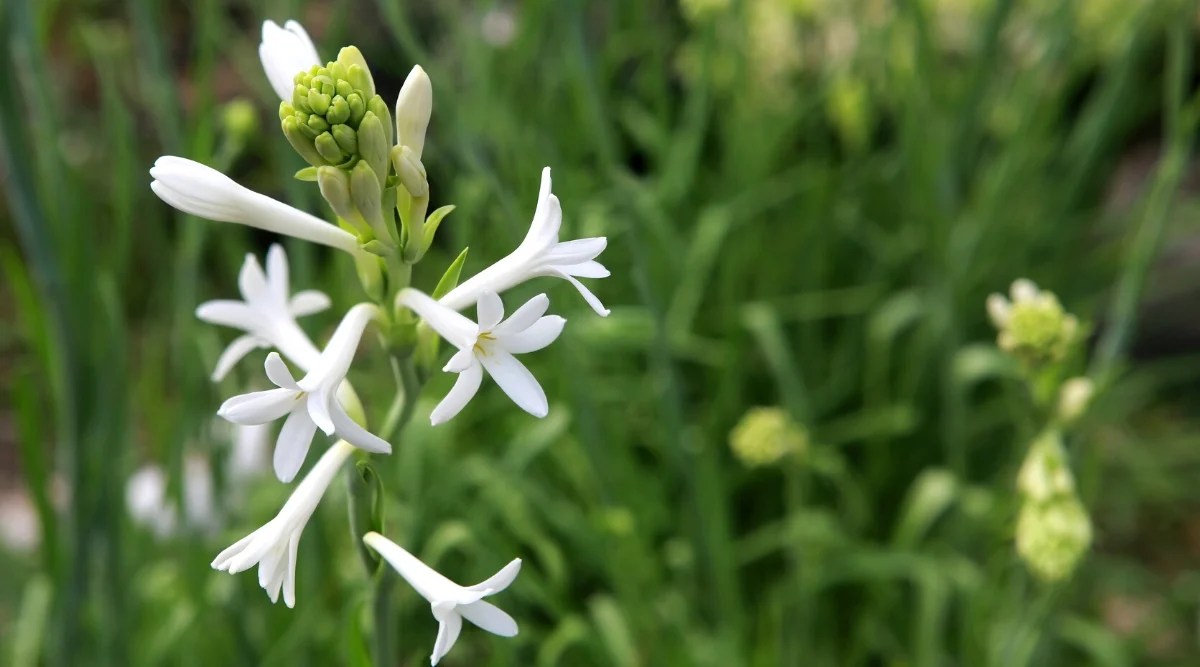
Final Thoughts
Something is beguile and perhaps just a bit witching about a garden where the flowers enshroud from the Lord’s Day and bask in the luminous glow of moonlight . The beauty and aroma of a Nox - blossom or Moon garden is the most enjoyable and tempting thing to lay eyes on . Whether you are a night owl or an early wench , these blossom that conceal from the sun merit a special quad to partake in their charm and fragrance with their dedicated caretaker .